In today’s fast-paced digital world, email has become one of the most crucial forms of communication, especially in business. Whether you’re writing to a colleague, a client, or a potential customer, your ability to craft an effective email can greatly impact your success. To help you become an email writer legend, we’ve created this master guide to take you through what you need to know.
Email Writer Foundations
Despite the development of project management and messaging tools, email is still the primary mode of business communication, with an estimated 306.4 billion emails being sent and received daily worldwide. Upping your game as an email writer can substantially impact your business.
To get started, consider the key elements of a well-written email:
- Clarity: Your message should be concise, articulate, and devoid of any ambiguity. Additionally, proper grammar and punctuation practices are essential to ensure professionalism.
- Email etiquette: Always remember to be polite, respectful, and maintain a professional tone throughout your message. Using a friendly yet professional tone creates a positive rapport between you and the recipient.
- Subject line: This serves as a gateway to your email, enticing the recipient to open and read it. A well-crafted subject line should be clear, concise, and relevant to the content of the email. It should provide a glimpse of what the email entails, prompting the recipient to prioritize opening it.
- Formatting: Use bullet points, numbered lists, and paragraphs (where relevant) to organize your thoughts effectively. A well-structured email is both visually appealing and easier for the recipient to read and comprehend.
Mastering the Art of Subject Lines
When it comes to email open rates, a well-crafted subject line can make all the difference. Studies have shown that 47% of recipients decide whether to open an email or not based on the subject line alone. Here are a few tips, one email writer to another, to help you craft compelling subject lines for your business:
- Keep them concise and to the point. Avoid using overly long or vague subject lines that might confuse or disinterest the recipient.
- Consider personalization. Adding the recipient’s name or referencing a specific topic of interest can significantly boost open rates.
- Leverage FOMO: People hate missing out. Include a deadline or a limited offer to entice them.
- Use numbers: People love stats, percentages, and number-based content because they’re definitive and clear. An email subject with ‘3 tips for writing emails that people want to read’, for example, can also generate the psychological desire to ‘check’ those three tips off in one’s mind.
- Leave them on a cliff: How do TV series masters keep viewers consistently yearning for the next episode? Cliff-hangers. Use your subject line to entice the reader with a juicy stat or strong outcome, followed by a call to ‘find out how.’
- A/B testing: Test different subject lines to see what resonates best with your audience. This can provide valuable insights into which types of subject lines lead to higher open rates and engagement. Don’t be afraid to experiment and analyze the data to refine your approach.
- Using emojis: Emojis can add a touch of fun and visual appeal to your emails, potentially making them stand out in a crowded inbox. However, it’s important to use emojis strategically to ensure they align with your brand voice, your audience, and the content of the email.
Structuring Your Email for Maximum Impact
The ideal email structure enhances readability and delivers your message effectively. Strike a balance between providing enough information without overwhelming the recipient.
- Start with a clear and concise introduction that grabs the reader’s attention. Briefly state the purpose of your email to set the context. Then, break down the body of your email into paragraphs, each containing a specific point or piece of information. This helps maintain readability and enables the recipient to navigate your message easily.
- When crafting the body of your email, consider using bullet points or numbered lists to highlight key information. This formatting technique makes your content more scannable and emphasizes important details you want the recipient to focus on.
- Incorporating relevant visuals like graphs, charts, or images can also enhance the impact of your email. Visual aids can help illustrate complex concepts, provide supporting evidence, or make your message more engaging and memorable for the reader.
- Conclude your email with a strong call to action. Clearly state what you want the recipient to do next, whether it’s scheduling a meeting, providing feedback, or taking any other desired action.
The Power of Being a Persuasive Email Writer
Being able to persuade your audience through your emails is a valuable skill. Whether you’re aiming to convince a client to choose your product or service, or seeking support from colleagues for a new initiative, persuasion is key.
Start by using social proof, including testimonials or case studies that highlight the success others have experienced by working with your business. You could also use scarcity and urgency tactics to create a sense of exclusivity and time sensitivity, compelling the recipient to take immediate action. Remember, the goal of being a persuasive email writer is to influence your reader positively and ethically. Focus on building trust, credibility, and providing value to create a lasting impact.
Personalization is also key in persuasive email writing. Address the recipient by name and tailor your message to their needs and interests. This shows that you have taken the time to understand their situation, increasing the likelihood of them engaging with your email.
Another effective strategy is to use storytelling to convey your message. Humans are naturally drawn to stories, so incorporating real-life anecdotes and intriguing narratives into your email can captivate the reader and make your argument more memorable.
Polishing Your Email Etiquette
Even with impeccable writing skills, overlooking proper email etiquette can undermine your efforts. Here are some email etiquette tips:
- Avoid include using all-caps, excessive exclamation marks, or overusing jargon. These can make your email seem unprofessional or difficult to read.
- Proofread your emails thoroughly to avoid any spelling or grammatical errors.
- Consider the tone and language you use in your emails. While it’s crucial to maintain professionalism, injecting a touch of warmth and friendliness can help build rapport with your recipients.
- Be specific in your subject line. Avoid generic subject lines like ‘Hello’ or ‘Important,’ and instead, be specific and concise. For example, instead of ‘Meeting,’ try ‘Meeting about Project XYZ’.
- Maintain email thread etiquette. Instead of simply hitting reply, consider whether your response is relevant to the entire thread or would be better suited as a separate email. This helps keep conversations organized and prevents confusion.
Take Your Email Writing to the Next Level with Tailored Ink
Ready to transform your email communication into a powerful asset for your business? Tailored Ink’s commitment to creating hyper-targeted, human-centric content ensures that every email you send is not just read, but remembered and acted upon. With a track record of success across top-tier publications and a passion for crafting messages that resonate, we’re the email writer partner you need to achieve and exceed your communication goals.
Don’t let your emails be just another drop in the digital ocean. Contact us, and let’s create waves together.




